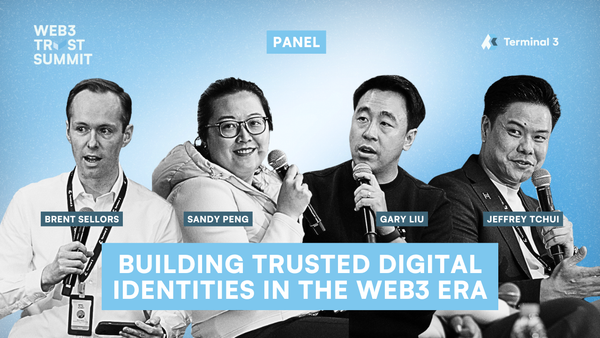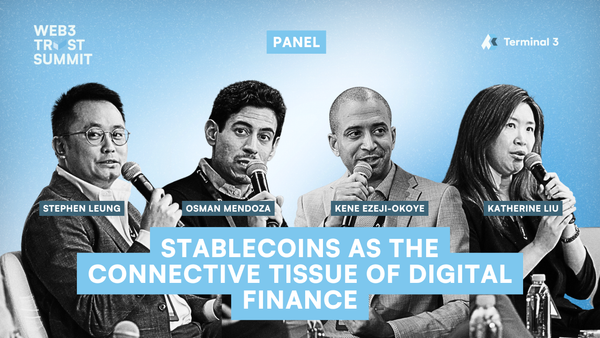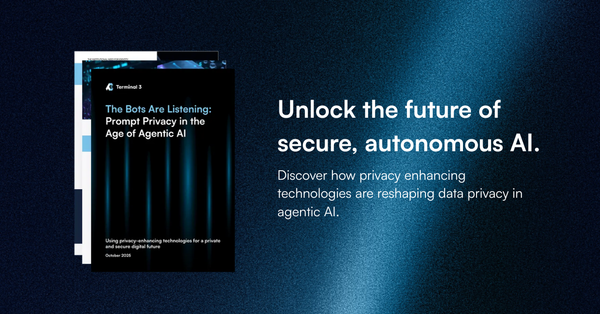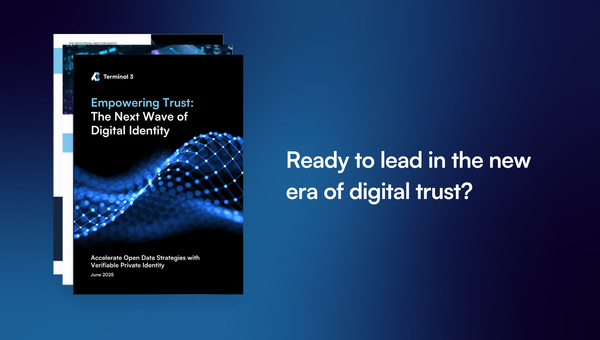From Faith to Proof: How TEEs Shield Your Data in the Cloud
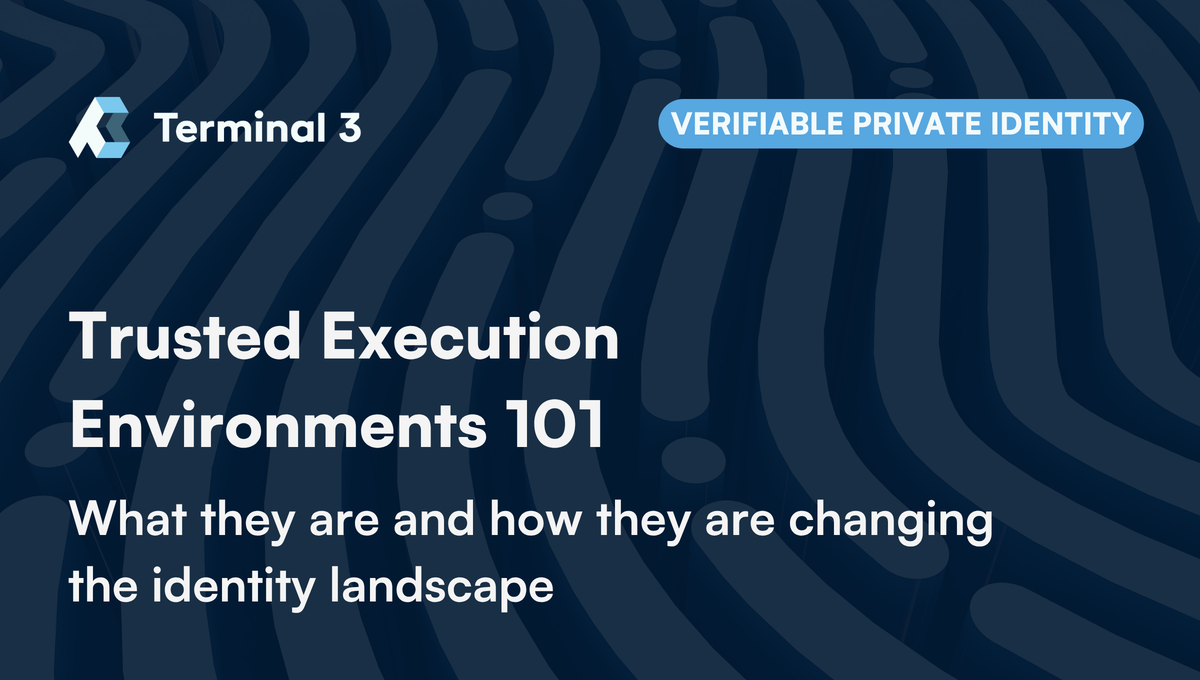
Learn how chip-level Trusted Execution Environments protect data in the cloud while enabling fast AI automation and compliance.
TL;DR
- Heavy fines, rising insurance premiums, and public distrust now follow every data leak or software mishap, costing companies billions each year.
- TEEs: a proven chip-level security method that acts like a locked room inside every server; sensitive customer details appear there for milliseconds, then disappear, and no one—not even the cloud provider—can look inside.
- Each time the room is used, it issues a tamper-proof receipt that outside partners, auditors, and regulators can check on the spot, turning “trust us” into “prove it.”
- This approach shortens audits, lowers insurance rates, and lets firms enjoy cloud savings and fast automation without risking customer data.
- Terminal 3 layers TEEs with additional privacy tools so its AI-driven platform can book, refund, and reconcile orders without ever exposing a passport number or card detail, delivering consumer-speed service with bank-grade assurance.
Beyond “Data Is King”: Solving the New Trust Crisis
Trusted Execution Environments (TEEs) have been around since the early 2010s, and have since been used to protect sensitive data like biometric data and prove autonomy in mobile phones and pet rocks. Terminal 3 sees this decade-old technology as part of the path to provide universal data security through decentralized and privacy enhancing technologies—read to the end to learn why.
Trust is the new scarce resource. For the past decade executives have rallied around the mantra that “data is king,” amassing ever-larger repositories chasing the promise of sharper analytics and more capable AI agents. That strategy is now running into three converging threats:
- Confidentiality risk: Vast repositories of personally identifiable information (PII) are irresistible breach targets and carry escalating regulatory penalties when compromised.
- Integrity risk: Modern software supply chains are labyrinthine; a single poisoned library, as in the SolarWinds Orion incident, can impact thousands of downstream systems.
- Provenance risk: when a company runs workloads on someone else’s clouds, boards must trust what they cannot see.
Each risk reinforces the others. A tampered program can access sensitive records; a rogue administrator can both alter code and expose data; an opaque third-party platform can mask the origin of either event. And regulators have noticed, as the GDPR racks up over EUR 6 billion in fines. The old strategy of “collect it all, protect it later” is collapsing under the weight of its own liability.
The result is a trust crisis that only technology rooted in cryptography can address. TEEs generate signed attestations that data remains confidential, software unaltered, and infrastructure uncompromised. They replace fragile human assurances with mathematically verifiable guarantees, restoring trust not through promises but through proof.
Autonomous AI Agents with Privileged Access
The push to automate customer support, fraud resolution, and real-time marketing has spawned fleets of AI agents that issue refunds, rebook travel, and authorise payments without human oversight. To act on a user’s behalf, each agent requires deep privileges such as API keys to billing platforms and decryption rights to passport images and credit card information. The concentration of privileges in often unsecured AI agents magnifies the impact of any compromise. A single tampered model can approve fraudulent transactions or leak entire subsets of PII.
However, traditional defences like container isolation or OAuth scopes are insufficient because attackers or rogue cloud staff can extract the agent’s live memory. As AI usage increases, businesses driving AI adoption face a lose-lose situation: either throttle automation initiatives or accept unchecked exposure of PII and payment data—both of which threaten revenue and regulatory compliance alike.
Escalating Breach Liability
Big and flat databases concentrate risk, meaning millions of records can be stolen in one attack. Regulators now treat such lapses as evidence of negligence: GDPR Article 83 allows fines of up to 4 percent of global turnover, while class-action settlements routinely add tens of millions more. The financial impact is compounded by mandated breach notifications that depress share price and trigger churn among enterprise clients who cannot tolerate secondary liability.
Third-Party Infrastructure and the Limits of Trust
Cloud migration and agile DevOps pipelines have extended the enterprise perimeter to infrastructure and software that the organisation does not own. The SolarWinds Orion compromise in 2020 showed how a single poisoned update can infiltrate thousands of systems, while the 3CX incident in 2023 highlighted supply-chain risk. Because most vendors provide promises rather than technical proof of their servers’ security, executives are forced to accept a high level of uncertainty.
How can TEEs benefit your business?
Key functionality
Trusted Execution Environments (TEEs) let businesses confidently run and prove the integrity of their most sensitive data and code—even on infrastructure they don’t own—without risking exposure or tampering.
What are TEEs and how do they work?
Think of a TEE as a tiny, locked meeting room that lives inside every new server-grade computer chip.
- The door locks from the inside
- A company puts one specific job in the room—“add up payroll,” “sign this payment,” “score this loan”—and then closes the door.
- No one outside the room, not even the cloud provider’s own IT staff, can look through the walls.
- The room shows its badge
- When the job starts, the chip issues a digital badge that says, “I’m a genuine Intel/AMD/ARM chip, and I’m running the exact program you approved.”
- Partners, auditors, or regulators can check that badge online in seconds.
- Secrets go in, answers come out
- If the badge is good, the company sends in its sensitive data—credit-card numbers, trading models, private keys—through an encrypted tunnel.
- The data is used only inside the room.
- When the work is done, the room sends back just the result (for example, a payment signature or a risk score) and then erases everything inside.
- Why executives should care
- Runs safely on any cloud. You keep “on-premises” levels of control even on someone else’s hardware.
- Cuts breach risk. Even a rogue system admin can’t snoop on what happens in the room.
- Easier compliance proof. That digital badge is cryptographic evidence you can hand to auditors instead of a slide deck.
In essence, TEEs let you handle your most sensitive work on outside infrastructure without having to trust the people who own that infrastructure.
Example: Trusted Execution Environments in Securing Election Votes
Consider an election authority that must publish the total number of “yes” and “no” votes from a remote polling site without exposing any individual ballot. The authority delivers a tamper-sealed counting box whose exterior carries a unique, cryptographically signed serial number. Upon arrival, poll workers photograph the number and transmit it to headquarters, where a system validates the signature and confirms that the unit’s hardware and software are authentic and unaltered—mirroring enclave attestation.
Throughout the day voters drop their paper ballots through a narrow slot. Inside the box an optical reader tallies each mark, but the display remains blank and no intermediate totals are emitted. When the polls close, workers turn a physical key that finalises the count; at that moment the device prints a single slip showing only the aggregate “yes” and “no” figures, then cross-cuts every ballot and deletes its memory. If anyone had tried to open the case, the seal would break, the serial number would fail verification, and headquarters would automatically reject any result from the compromised unit.
The sealed counting box therefore mirrors a Trusted Execution Environment: the interior scanner and memory correspond to the enclave’s encrypted runtime, the serial-number verification is remote attestation, and the solitary end-of-day tally represents the minimal output released after confidential processing.
How TEEs Minimise Breach Impact and Liability
A Trusted Execution Environment confines an organisation’s most valuable assets—cryptographic keys, authentication tokens, customer records—to an enclave whose memory is transparently encrypted by the CPU itself. Even if malware gains root privileges on the host operating system or hypervisor, it cannot extract intelligible data. Incident-response costs fall accordingly: legal notifications are narrower, regulatory penalties are lower, and the organisation earns a more favourable cyber-insurance risk score. In effect, the organisation moves from a posture of inevitable loss to one of demonstrable resilience, turning breach scenarios into a manageable event rather than a financial and logistical nightmare.
Trustworthy Cloud and Outsourcing Adoption
By anchoring confidentiality and integrity in silicon rather than in physical building access or employee background checks, TEEs decouple security guarantees from facility ownership. A workload lifted to a third party executes inside the same hardware-enforced boundary it would enjoy on premise and mitigates concerns about data sovereignty and insider threat. Moreover, remote attestation allows the enterprise to verify, at any moment, that the external service is running the expected code stack and is patched to the required level. The result is a flexible sourcing strategy that captures the economic advantages of cloud computing while preserving the confidentiality standards traditionally possible only in a private data centre.
T3’s TEE-Powered Transaction Platform
Terminal 3 uses Trusted Execution Environments to eliminate the two riskiest steps in AI-driven digital commerce: handing off customer credentials to external engines and letting autonomous AI agents act on those credentials. On T3 Network, TEEs and other privacy-enhancing technologies like Zero-Knowledge Proofs (ZKPs) and Homomorphic Encryption prevent AI agents from ever handling or accessing user PII and payment information. All PII and payment tokens remain encrypted until they reach an enclave, where they are momentarily revealed only to hardware-verified code in order to execute tasks on third party last mile transaction platforms such as Booking.com and Amazon.com. This approach safeguards user information from potentially malicious AI agents: it blocks insiders and supply-chain malware from scraping sensitive data while providing auditors with continuous evidence that Terminal 3 enforces least-privilege access. Ultimately, the T3 Network guarantees secure data storage and processing, resulting in faster automation, lower breach liability, and demonstrable regulatory compliance.
Conclusion
In the modern era of data collection, software supply-chains, and now AI, we as businesses and users must trust the AI agents we use, the websites we visit, and our businesses’ third party dependencies to safely handle and protect our data and PII.
Here at Terminal 3, we are challenging this notion. Trusted Execution Environments remove the trust layer between you and the software collecting and storing data about you altogether, delivering cryptographic proof rather than marketing promises that every byte of information is handled inside hardware-sealed vaults by code whose identity can be verified in real time.
Through our architecture of TEEs and other privacy-enhancing technologies, Terminal 3 achieves a digital commerce platform that moves at consumer speed yet is governed with bank-grade assurance. We protest, “No Kings,” as data, code, and infrastructure no longer rule users and businesses, backed by hardware you can mathematically trust. If your organisation is ready to replace blind faith with verifiable control, Terminal 3’s TEE-powered stack is the fastest path to that future.

